Context
Keeping track of how many stitches you have cast-on can be difficult, particularly when you are casting on several hundred stitches. Using a marker thread makes it easier to count the stitches, with the added bonus (if you are preparing to knit in the round using circular knitting) that the thread makes it obvious if you have twisted the cast-on edge around the needles or cable when you join the start to the end of the cast-on edge.
How to do it
What you need
In addition to the yarn you will be using for the cast-on itself, you need a thinner yarn in a contrasting colour to use as the marker thread. Ideally, the marker thread will be smooth (so that it is easier to pull out from the finished item) and thinner than the main yarn (so that it does not space out the cast-on stitches).
You will use the marker yarn to highlight groups of stitches so that you only need to count the number of groups to find out how many stitches you have cast-on. I use groups of ten, but you might find using groups of twenty works for you.
Preparing to cast on
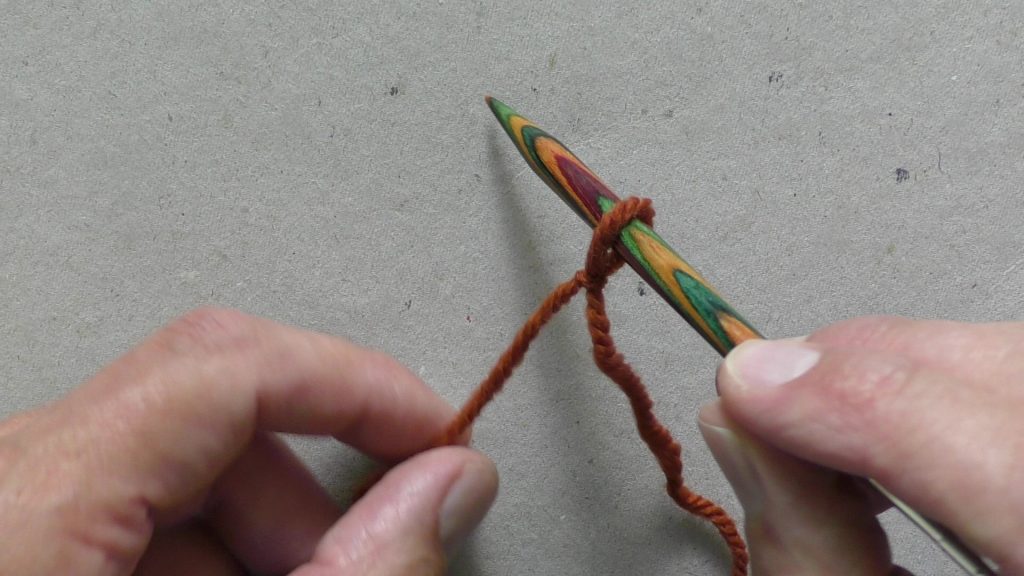
Make a slip knot at the end of the marker yarn and place the loop over the needle onto which you will be casting-on the stitches. This will hold the free end of the marker yarn stead to stop you pulling out the marker yarn when you are casting-on – you could leave the end dangling if you prefer.
Cast on a group of stitches
Make sure that the marker yarn is to the near side of the yarn you will be using to cast-on. (If you forget, you can move the marker yarn just before you finish your first group of stitches).
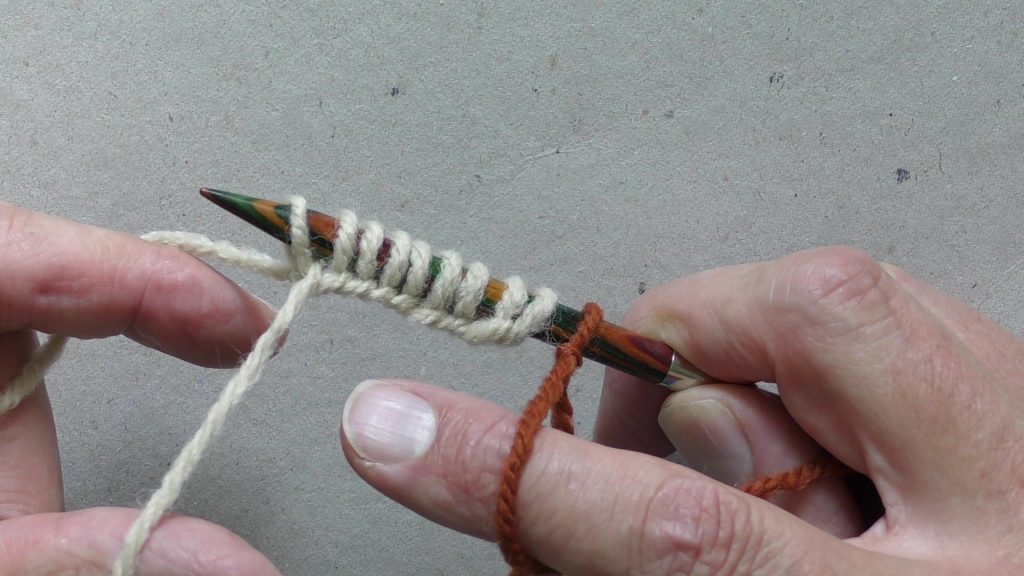
Cast-on one less stitch than the number of stitches you have chosed for your group size. For example, if your group will have ten stitches, you cast-on nine stitches at this step. When you have cast-on these stitches, count them again to make sure that you have the right number.
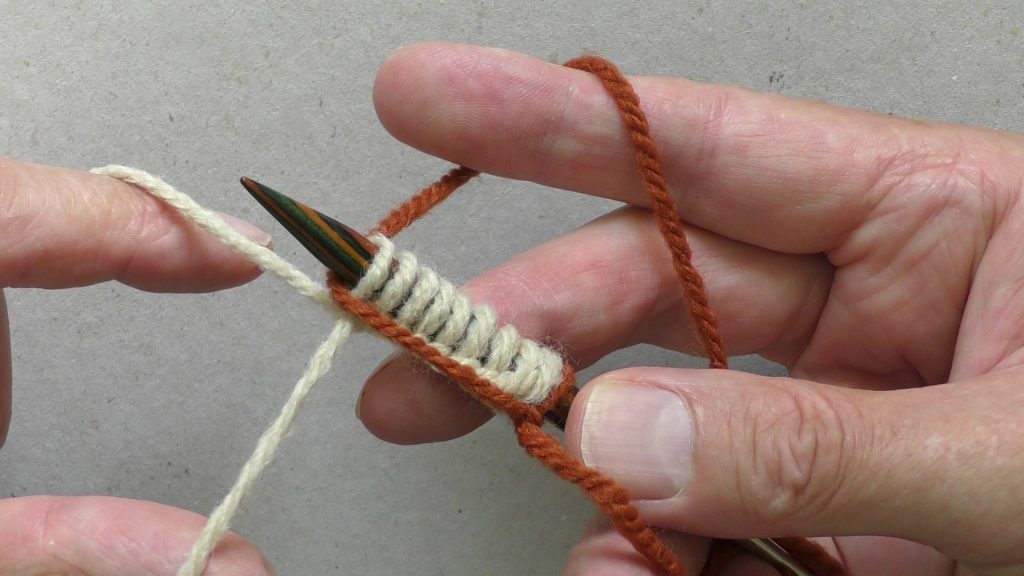
Move the marker yarn to the far side of the needle so that it passes between the free end(s) of the cast-on yarn(s) and the tip of the needle. This is the same movement that you would make if you were changing from a purl to a knit stitch using the English (right-handed) knitting method. Let the marker thread lie tidily across the front of the cast-on (too loose and you will catch it while you are knitting, too tight and it will make it difficult to separate the cast-on stitches to knit them). Cast on the final stitch in the group.
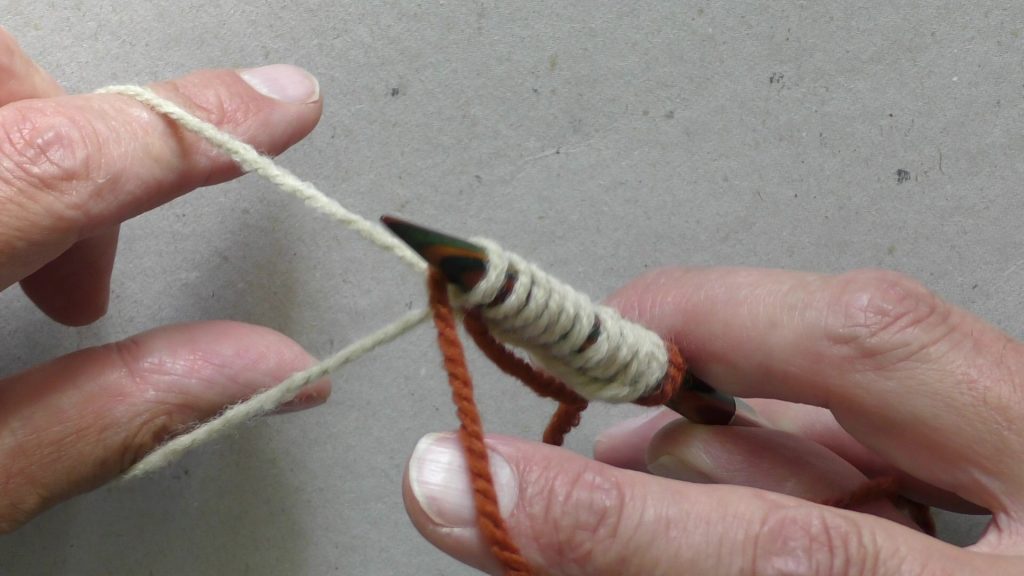
Move the marker yarn from the far side to the near side of the needle, making sure that it passes between the cast-on yarn and the tip of the needle. This is the same move that you would make when moving from a knit to a purl stitch using the English (right-handed) knitting method. You have now marked one group of stitches.
Repeat these steps until you have cast-on the right number of stitches. If the number of stitches to be cast-on is not a multiple of the size you chose for the group, you will not complete the last group and should leave the marker thread dangling to the near side of you work.
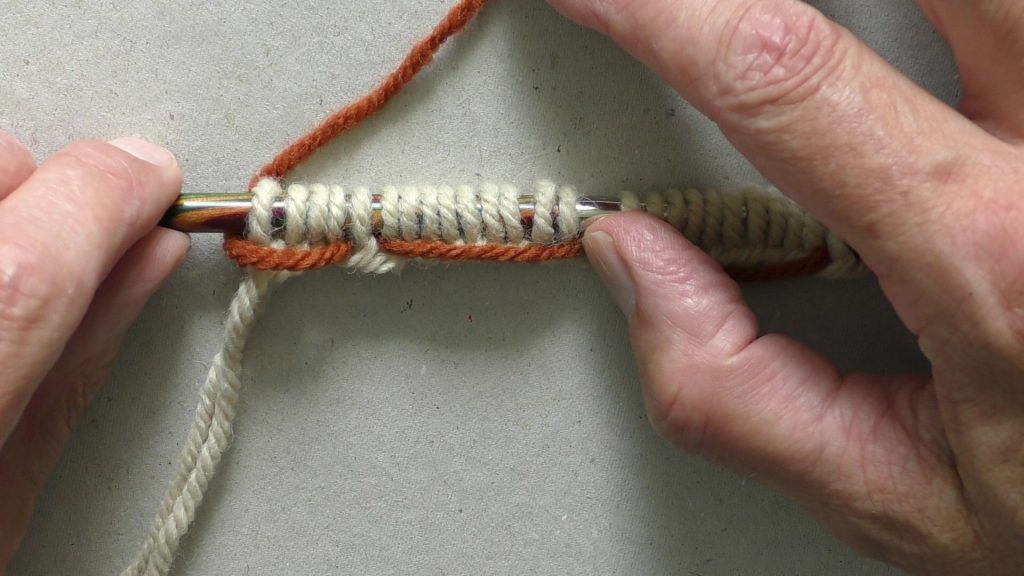
Repeat these steps until you have cast-on the right number of stitches. If the number of stitches to be cast-on is not a multiple of the size you chose for the group, you will not complete the last group.
Counting the stitches
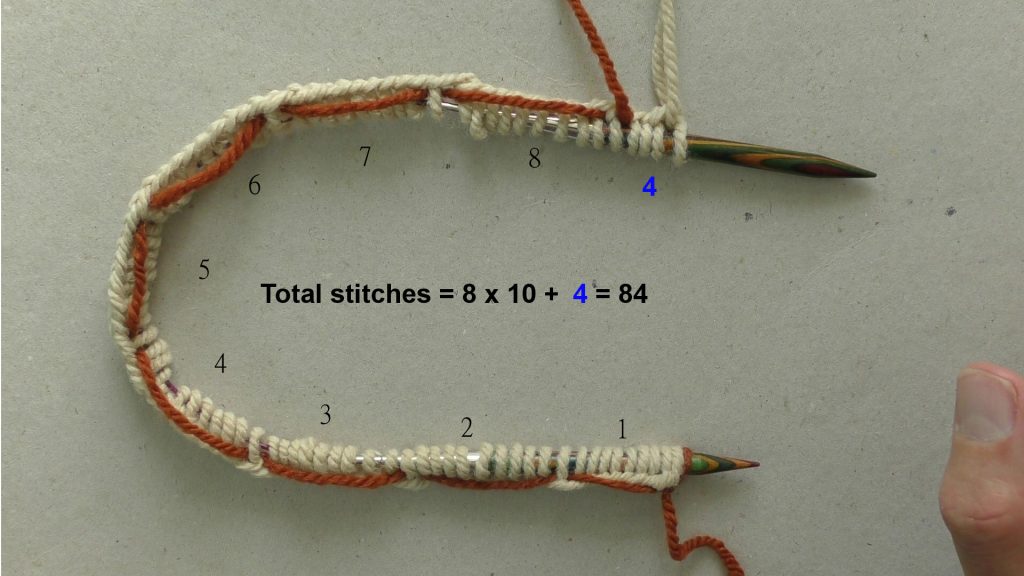
Counting the number of cast-on stitches is now simplified to counting the lengths of marker yarn that you can see lying along the cast-on edge. Multiply the number of lengths (less one if the final group was not completed) you can see stranded across your cast-on by the number of stitches in the group, and then add on the extra stitches at the end – and you know how many stitches you have cast-on.
Number of cast-on stitches
=
(number of full lengths of marker yarn in front of the cast-on stitches)
x
(number of stitches in a group)
+
(number of additional stitches in the unfinished group)
Once you have checked the number of cast-on stitches, if the end of the marker thread is on the near side of the needle, move it to the far side as if you had finished on the final stitch of a group.
Avoiding a twisted cast-on when joining in the round
If you will be joining the ends of your cast-on so that you can continue to work by knitting in the round (circular knitting), the marker thread can help you avoid twisting the cast-on edge.
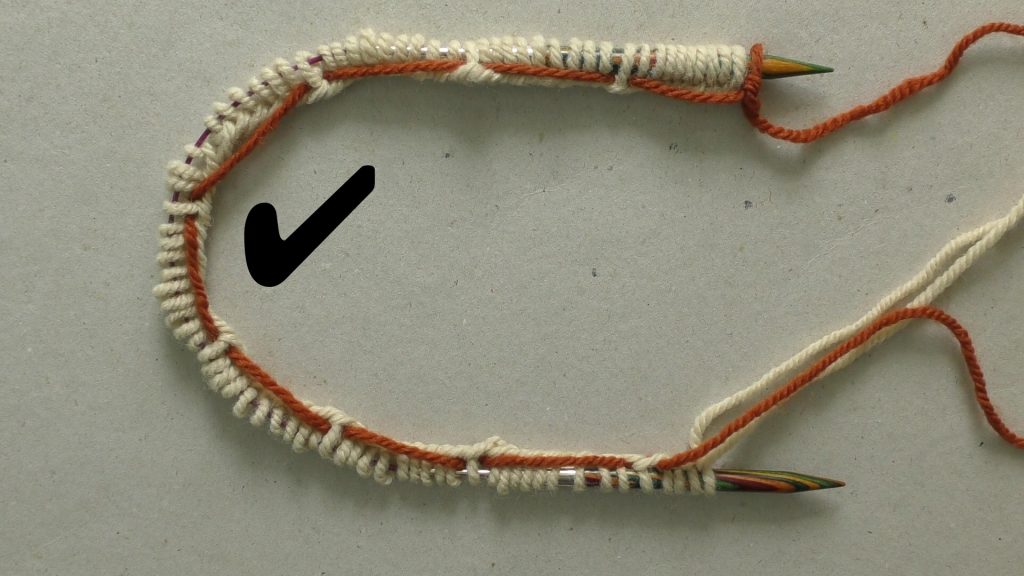
As you prepare to join the ends of your cast-on, look at the position of the marker thread. If it lies to one side of your cable (or double pointed needles) as in the photograph, your cast-on is not twisted.
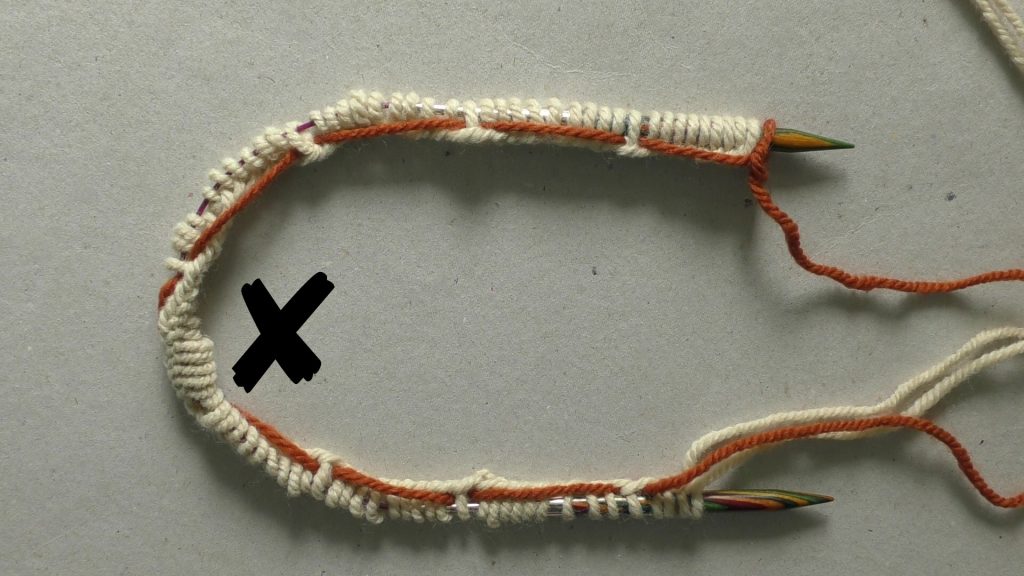
If, however, you see the marker thread disappearing behind the cable or double poionted needle, it means that your cast-on edge is twisted, and you will need to untwist it before you make the join.
When you join the ends of your cast-on, you can remove the slip knot in the marker thread from the needle. Pass both ends of the marker thread to the far side of your work so that they lie above the working yarn. This will trap them so that you can check that your cast-on edge remains untwisted as you work the first few rounds. If you just left them dangling you would not be able to see if that section of the cast-on was twisted.
Helpful links
You may like to view the video T-torial on using a marker thread.

